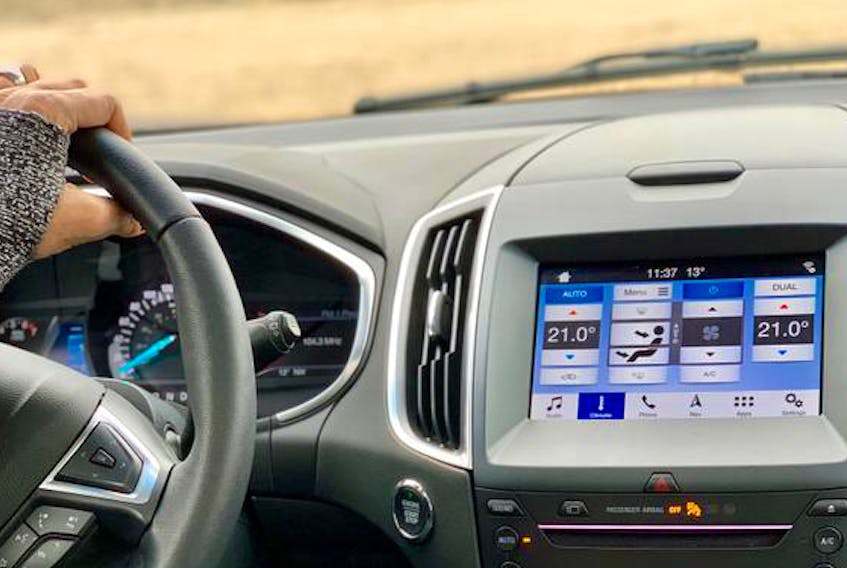In the late 1960s, the Canadian military utilized a fleet of 1968 Plymouth Fury staff cars. The black four-door sedans were as base as could be with not a single optional feature beyond an automatic transmission and chrome flag holders on each front fender to support a flag indicating a high-ranking officer or dignitary was on board.
The ‘slant-6’ powered brutes had no radio, floor carpets, cruise control or power steering, brakes or windows found on most cars these days.
My first and only ride in a Canadian Forces staff car was from Sackville, New Brunswick, to Camp Gagetown near Fredericton to undergo the first of a series of medicals required for pilot training.
At precisely 09:00 hours, when the shiny black Plymouth pulled up in front of Trueman House, Officer Cadets Sowerby G.W. and twin brother Sowerby L.B. dutifully got in. Larry sat in the back and I in the front. The car’s seat belts were tucked behind the seats, obviously never having been used.
The ruddy-faced Corporal behind the wheel introduced himself and we headed west along the spanking new section of the two-lane Trans Canada Highway. It wasn’t long before he asked if I wanted to drive, and it took a nano second for me to nod in agreement.
As I waited for him to pull over, he moved the bench seat as far back as it would go, then slid his body ahead, so his chest was against the steering wheel, and told me to slip behind him.
Over the next 20 seconds, at highway speed with arms and legs flailing, the driver switch was completed. I was driving and the Corporal was sitting in the passenger’s seat about to fall asleep.
It was a reckless manoeuvrer, one I have never attempted again. But it remains my pinnacle of distracted driving through a half-century behind the wheel of thousands of vehicles.
Of course, as automobiles have evolved so has their complexity of operation, the intricacy of highways, the density of traffic and what is available for drivers to pass the time.
Gone are the days when a driver is just driving. We are on the verge of self-driving cars that will allow operators to do other things beyond performing tasks required to get a vehicle and its occupants to a destination. Although some claim roads will be safer when artificial intelligence gets us down the road, distracted driving has become significant in the causes of traffic accidents.
Communication with the outside world with hand-held devices is one of the biggest culprits. Texting, talking, checking e-mail and social media notifications on them is responsible for thousands of highway fatalities.
It’s not just using a hand-held device, but what the communications are about. Is it an argument or a business deal that is falling apart? Is it a meeting that has to be rescheduled or a romance that has gone sour?
The complexity of vehicle operating systems is a distraction as well. To keep the costs down, many manufacturers use touch screen components to operate heating / cooling systems, radios and entertainment features. Although it only takes a second to determine where your finger needs to be placed to carry out the function, it’s a distraction from what is going on outside the vehicle.
More and more of today’s drivers rely on navigation systems to get to their destinations and, although marvels of technology, the systems are a distraction and require drivers to study a screen rather than the road ahead.
There are plenty of other distracting activities going on inside a vehicle. Eating, smoking, personal grooming and even pets and children all interfere with drivers’ concentration.
There are distractions outside the vehicle, too. Focusing of roadside billboards, analyzing a fender bender or checking out the lines on a new car on a dealer’s lot all take our minds off driving.
Panhandlers in the centre of many boulevards are a problem as well, especially since most are targeting drivers about to turn left at an intersection, probably the most dangerous manoeuvre in city driving. I’m sure many have sad stories, but the only reason they are there is because drivers give them money, a dangerous distraction when preparing to turn left across oncoming traffic flow.
Of course, beyond the risk of an accident, distracted driving can cost you. Get caught and first offence fines range from $ 233.95 in Nova Scotia along with four demerit points, to $1,000 and three demerit points in Ontario. In addition, insurance premiums could go up as much as 25 per cent. It’s time to put those phones away when behind the wheel.
What can we do to stay focused on the task at hand? Start by considering what driving is all about. Appreciate the solitude, get off the navigation systems and Google maps and learn the routes.
Put a few more minutes into your commute plan and pull over safely to check those nagging emails and text messages. Strap in the pets or put them in a cage or area blocked from the front seat. Avoid discussing sensitive issues with passengers and get to know your vehicle and its operating systems. Don’t rely on drive-through food stops and in-car dining.
When I look back at my distracted driving stunt in the 1968 Plymouth staff car, I cringe. Irresponsible and foolhardy for sure, but once I was behind the wheel of a car with nothing but a heater, windshield wipers and a ruddy-faced corporal to deal with, there wasn’t much else to do but drive.









